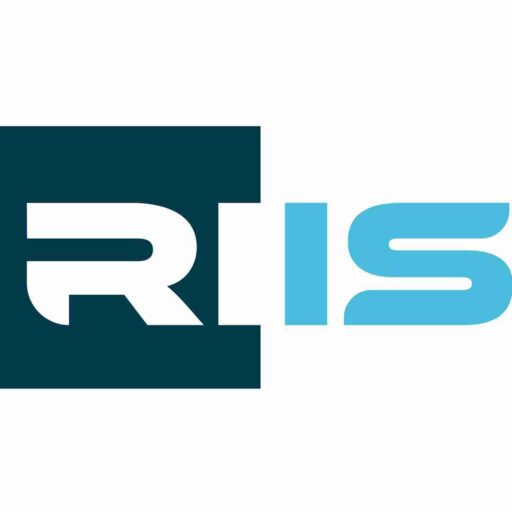Tailings dams — the vast engineered structures that store the waste produced during mining operations — are both essential to modern mining and one of its most significant environmental risks. Globally, failures have led to catastrophic consequences, from environmental devastation to loss of life. In South Africa, a country shaped by its rich mining legacy, these risks are especially pressing.
Estimates suggest there are more than 200 active tailings dams in South Africa and over 6,000 legacy sites. As climate variability increases and infrastructure ages, so too does the urgency to understand and manage these threats effectively. Traditional approaches – including regulatory oversight and on-site inspections – remain important but are often reactive. The need for predictive tools and data-driven preparedness is growing.
This is the backdrop against which the RIIS team undertook a cutting-edge simulation of a potential tailings dam failure in Limpopo province, combining Earth Observation (EO) data, GIS, and hydrodynamic modelling to offer a powerful, predictive lens on disaster risk.
From tragedy to technology: Learning from tailings disasters
Globally, the risks posed by poorly managed tailings dams have been seared into public memory. In 2019, the Brumadinho dam disaster in Brazil killed over 270 people and contaminated vast stretches of land and waterways. The tragedy was a tipping point for global standards, leading to the creation of the Global Industry Standard on Tailings Management (GISTM), which emphasises transparency, stakeholder engagement, and use of advanced monitoring technologies.
South Africa is no stranger to these failures. The Merriespruit disaster in 1994 resulted in 17 deaths in the Free State, while the Jagersfontein collapse in 2022 once again exposed the devastating consequences of tailings dam breaches – destroying homes, displacing communities, and prompting fresh questions around accountability, regulation and oversight.
These events underscore the urgent need to move from reactive crisis management to proactive, predictive planning – exactly what the RIIS initiative aimed to demonstrate.
The RIIS simulation: Seeking a new standard in predictive risk modelling
In its recent project, the RIIS GIS team developed and ran a detailed simulation of a tailings dam breach in a mining-intensive region of Limpopo. The objective was to understand what might happen if a failure occurred — before one ever does — and to help local stakeholders develop robust contingency plans.
The methodology highlights:
- Data acquisition: High-resolution satellite imagery (50cm), digital elevation models, land use data, and hydrological datasets formed the foundation of the model.
- Scenario development: Eight different breach scenarios were simulated, reflecting both dry and wet season conditions, as well as varying intensities of rainfall and dam wall integrity.
- Hydrodynamic modelling: Using EO-derived rainfall and topography data, flood depths, flow velocities, and the dispersion of tailings were modelled across the downstream area.
- Community impact assessment: Populations, housing types, evacuation routes, and critical infrastructure were mapped to identify who would be at risk, and how response plans could be designed in a context-sensitive way.
- Environmental risk mapping: Grazing lands, rivers, and sensitive ecosystems were analysed for potential contamination, requiring ongoing monitoring or rehabilitation.
The findings were stark. Several scenarios indicated the potential for widespread flooding of residential and agricultural land, contamination of local water sources, and significant disruption of transport and emergency services. But equally important was the clarity the model provided: it showed where and how to intervene before disaster occurs.
Insights for the mining sector – and beyond
The RIIS simulation didn’t just assess a single risk event; it demonstrated a replicable, scalable method that could be used across South Africa — and the continent — for a wide variety of disaster preparedness applications.
Some of the key insights included:
- Infrastructure planning: Roads, public buildings, and power lines within potential flood zones were mapped for reinforcement or rerouting, ensuring that recovery and rescue operations would not be impeded.
- Community resilience: By identifying vulnerable communities and defining realistic evacuation paths, the model supports the development of grounded emergency response plans.
- Policy and regulation: The results offer a valuable resource for both mining operators and regulators, helping prioritize site inspections, guide investment in dam maintenance, and identify gaps in existing oversight mechanisms.
- Environmental monitoring: The flagged zones for ecological sensitivity provide a starting point for long-term impact assessments and conservation planning.
Leading with local intelligence
This work highlights how African organisations like RIIS are not just responding to global standards but actively advancing them. By combining local knowledge with EO-driven modelling, this project positions South Africa and the continent at the forefront of disaster risk innovation.
It also aligns with broader efforts around climate adaptation, sustainable mining, and infrastructure resilience. As the mining sector grapples with social license and growing pressure to disclose environmental risks, projects like these can serve as both internal planning tools and public accountability mechanisms.
A blueprint for resilience
The RIIS tailings dam simulation is more than a technical case study — it’s a call to action. As climate shocks grow more frequent and infrastructure ages, predictive modelling and proactive planning must become standard practice.
For governments, mining houses, regulators, and communities, this work provides a clear roadmap: combine Earth Observation, GIS, and scenario-based modelling to prepare for — and ideally prevent — the next disaster.
Africa’s future lies in data-driven resilience, and this initiative is a model of what’s possible when technology meets local leadership.







